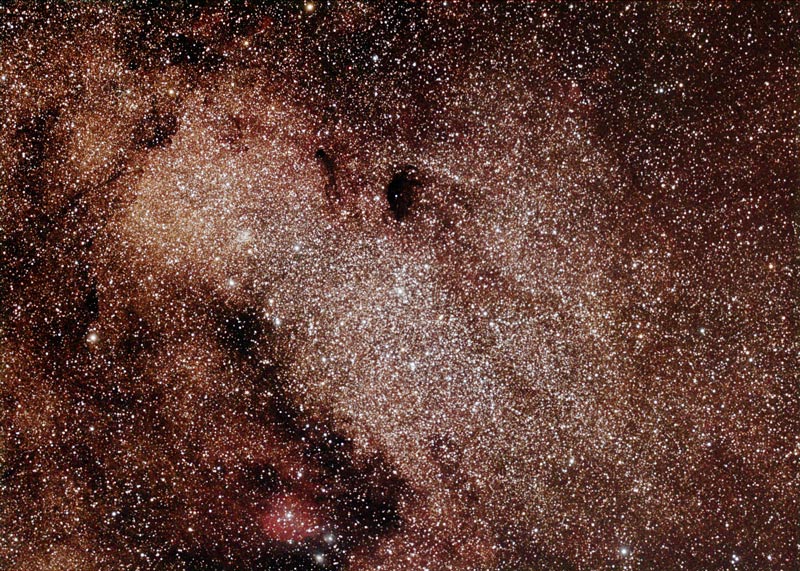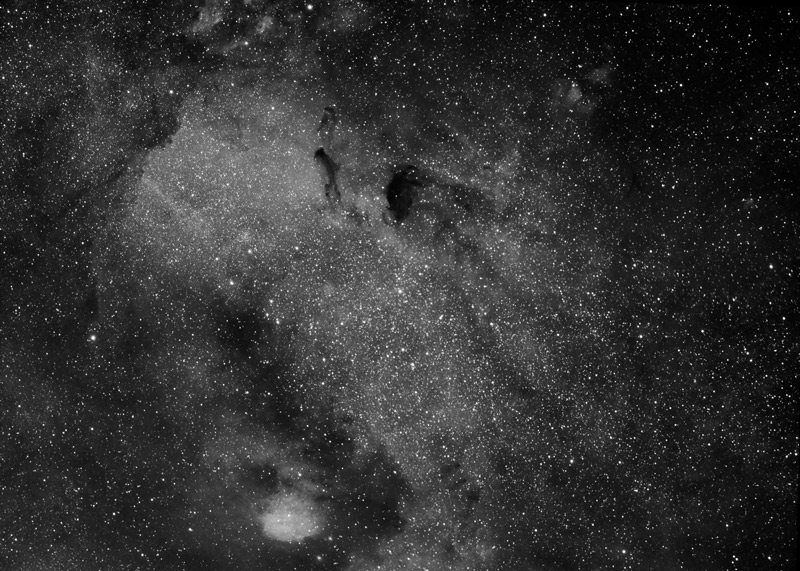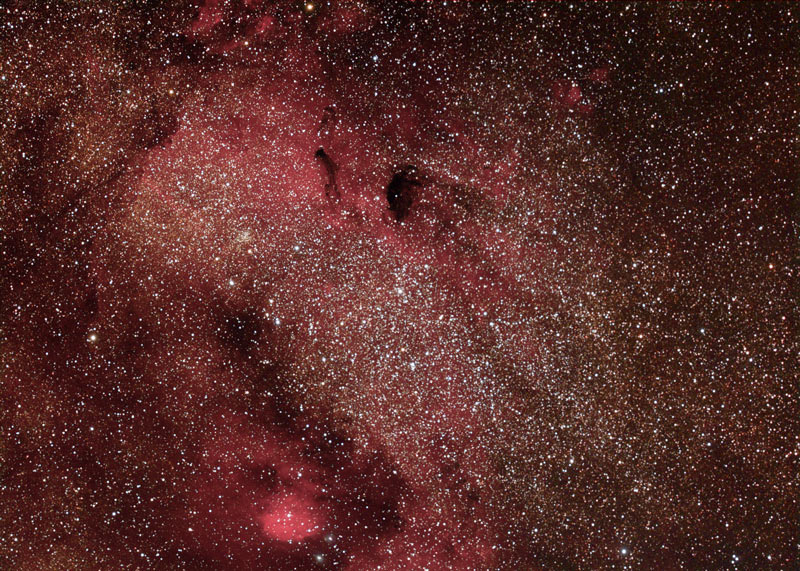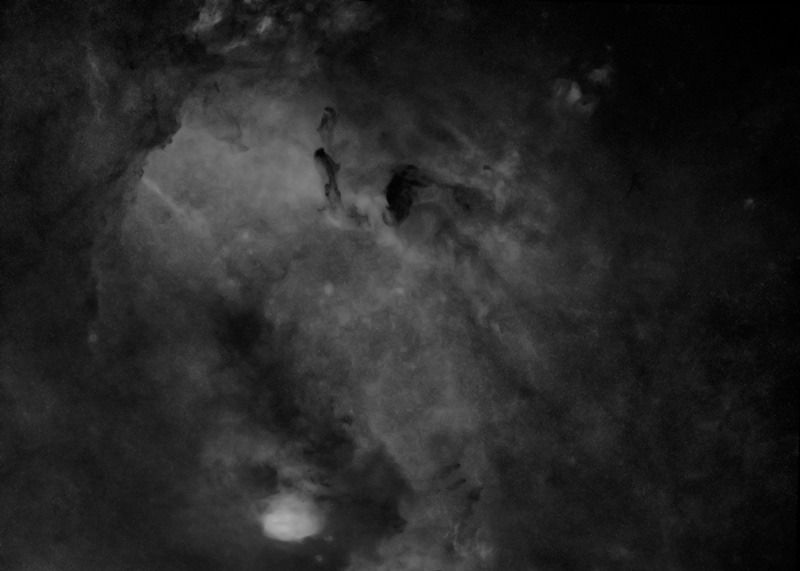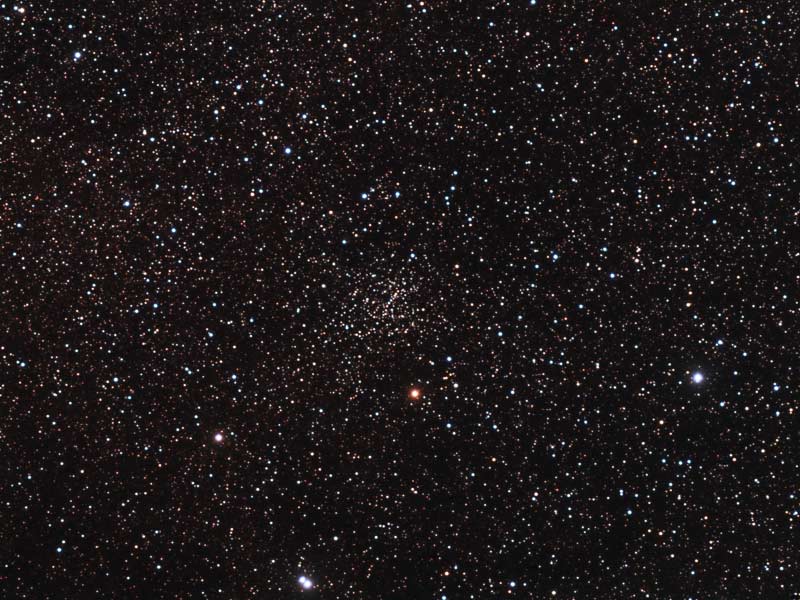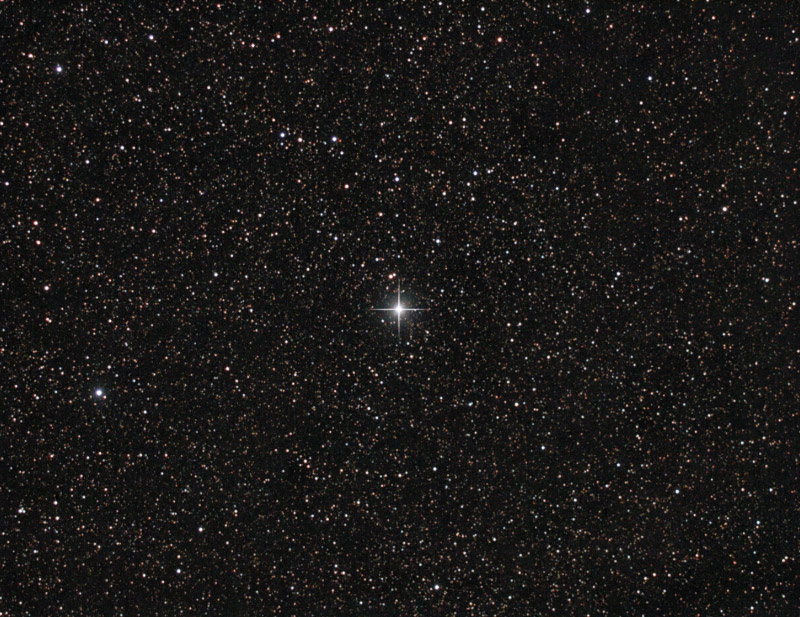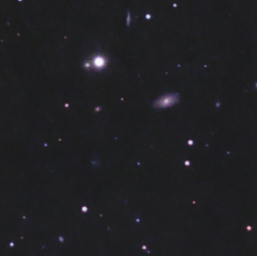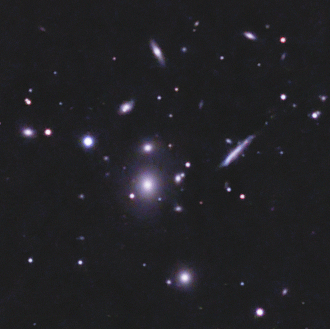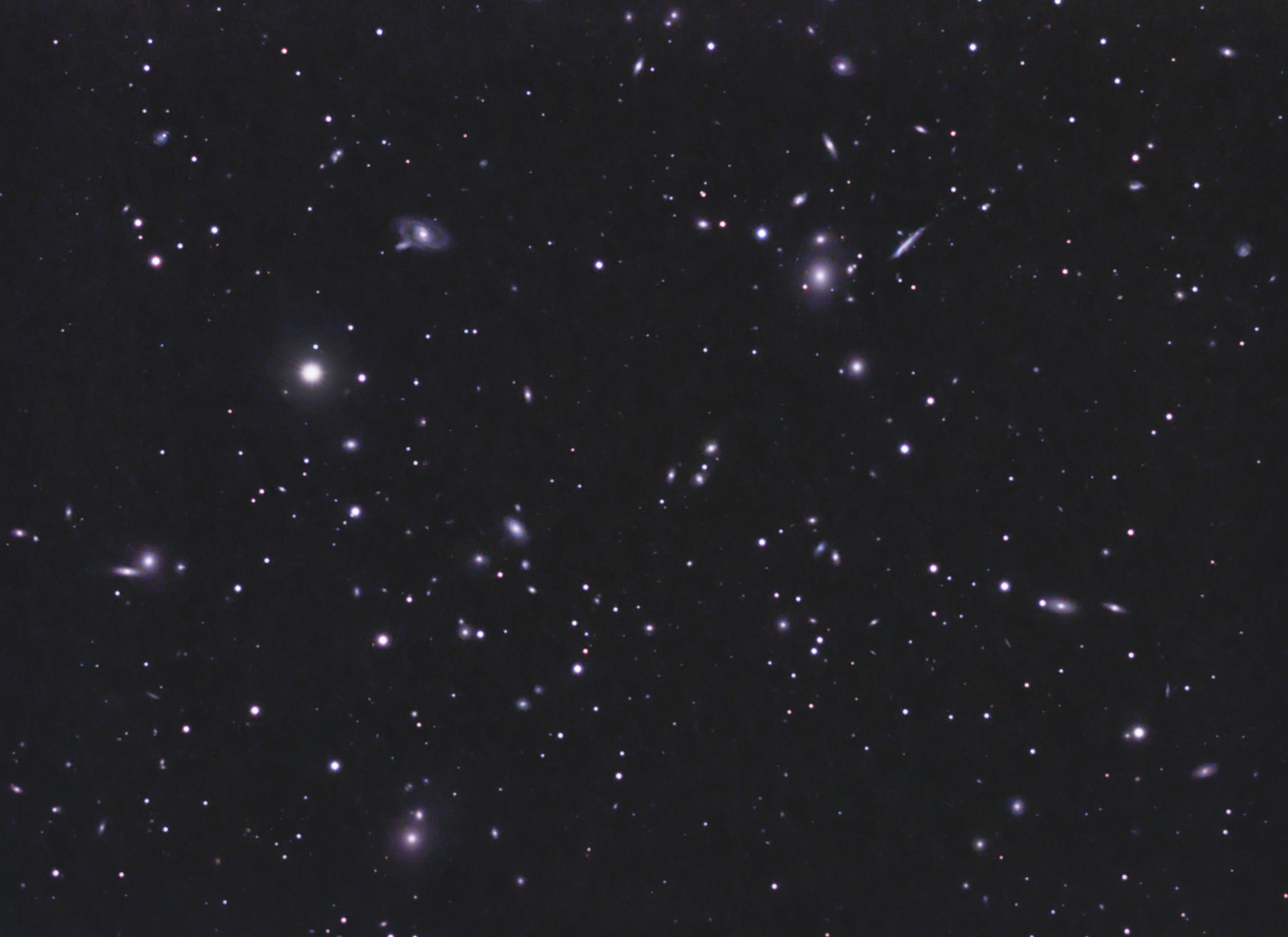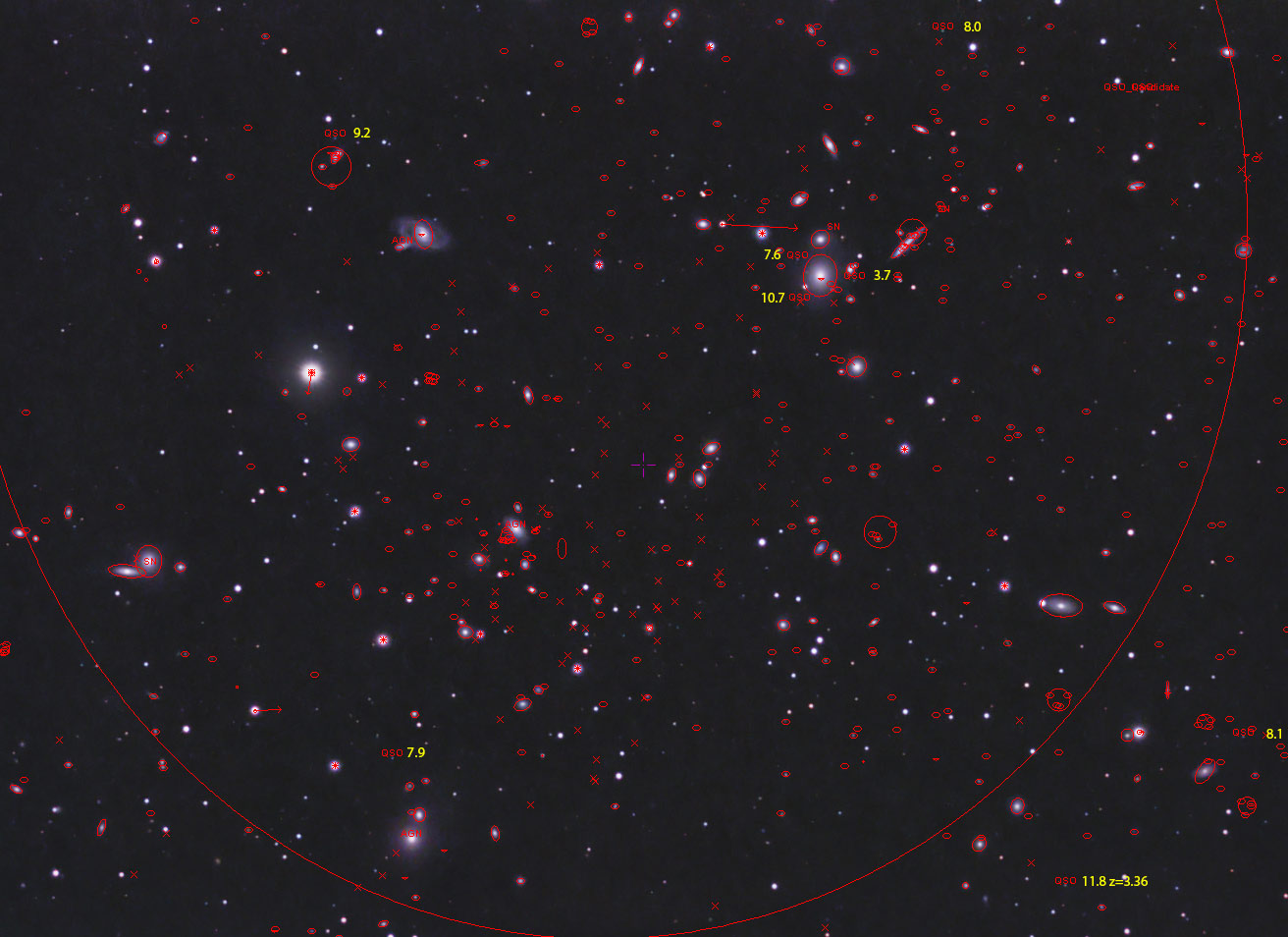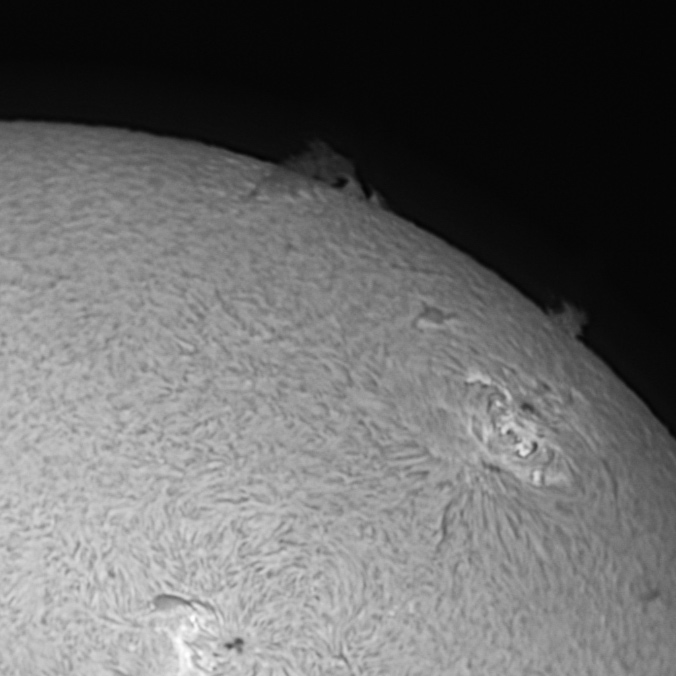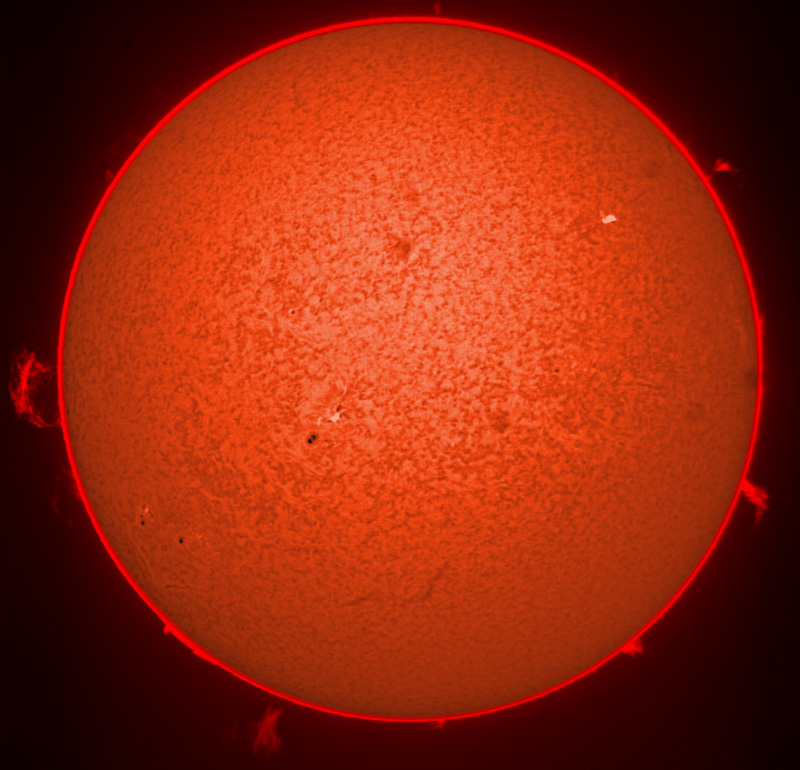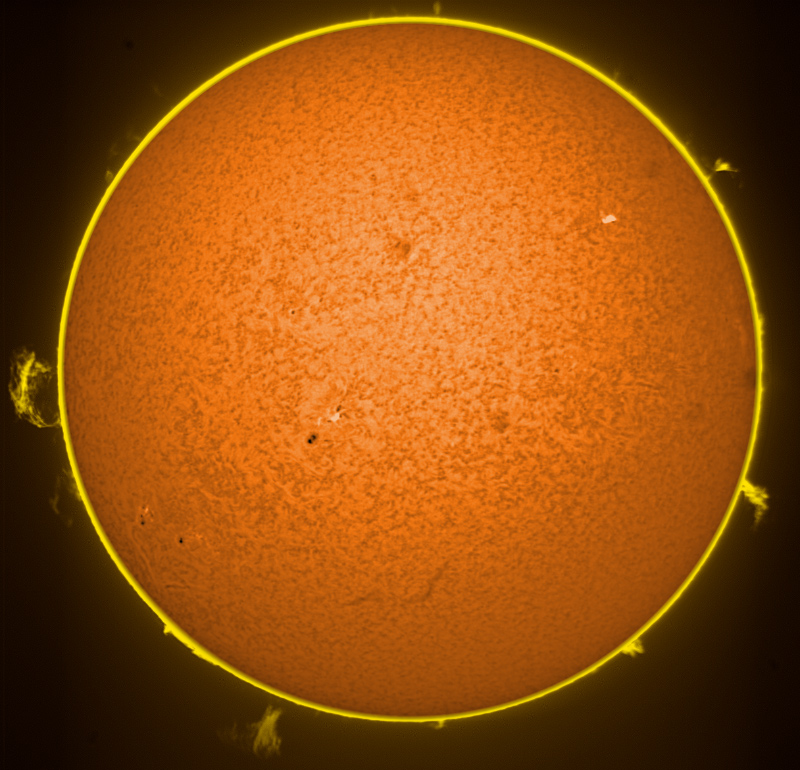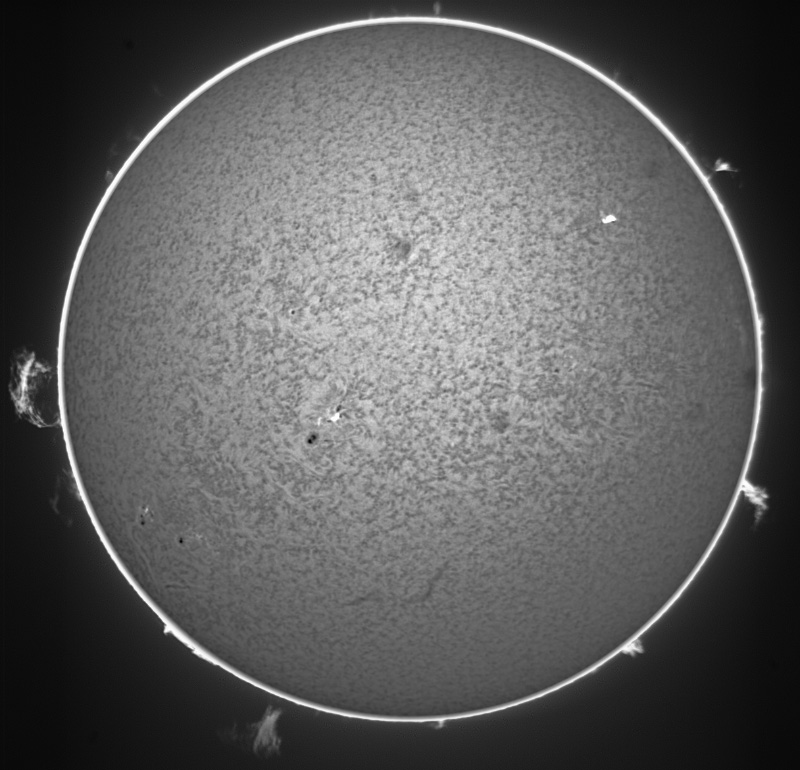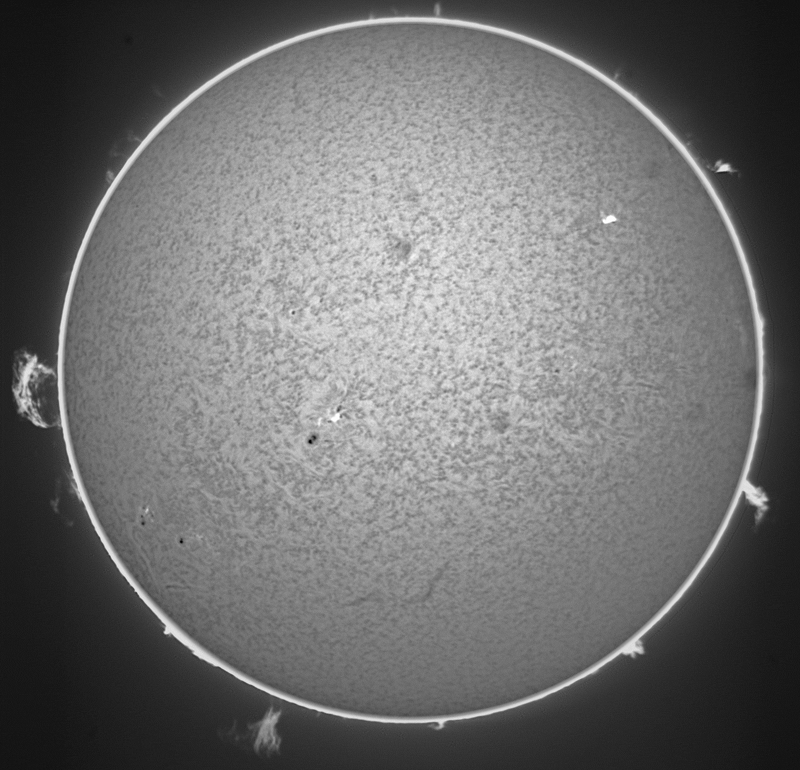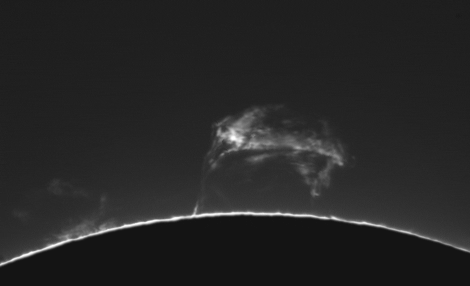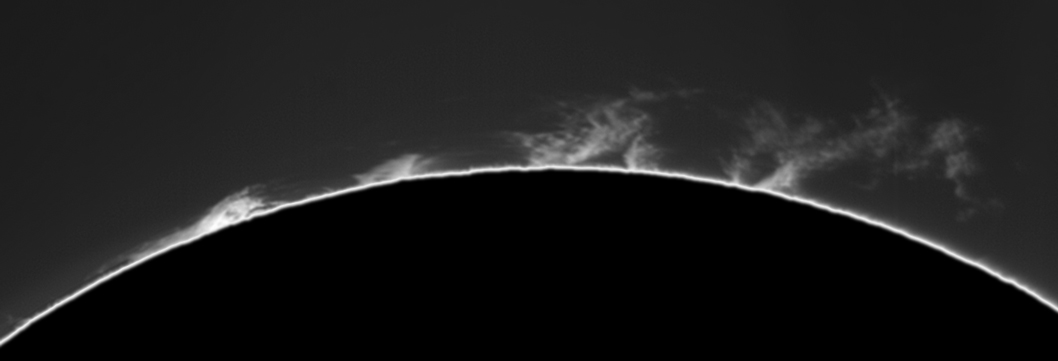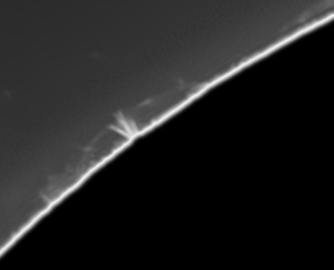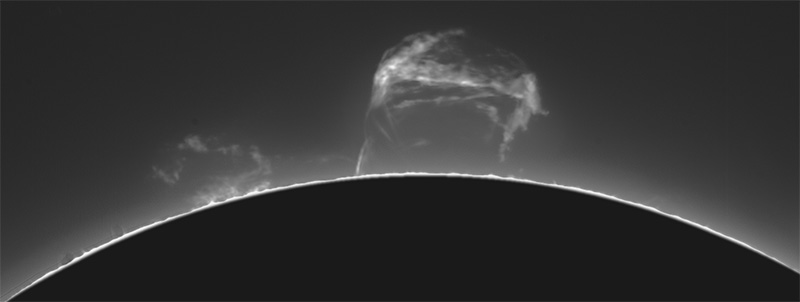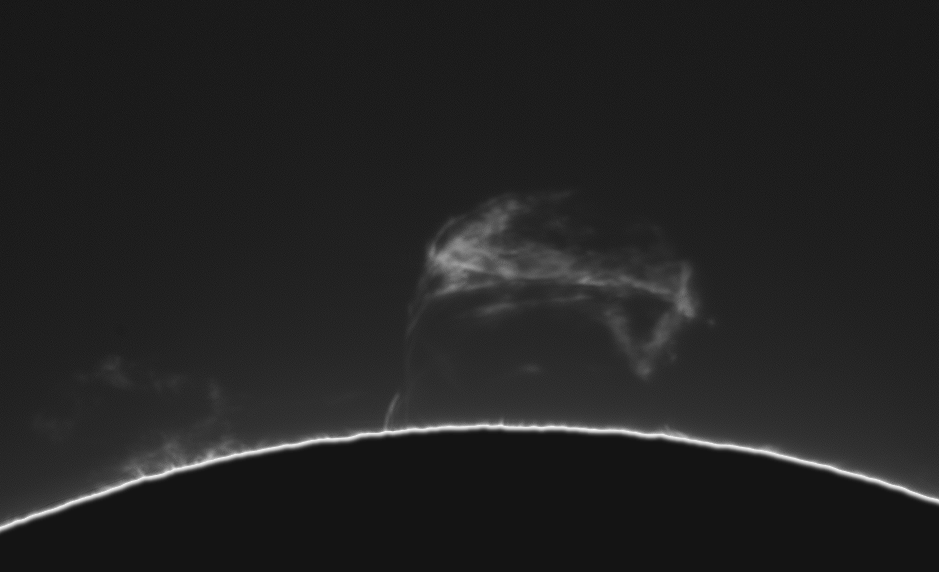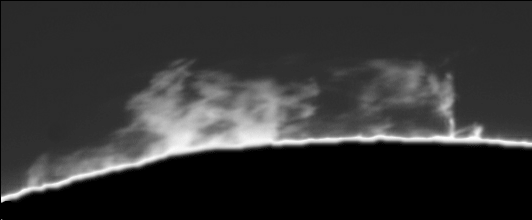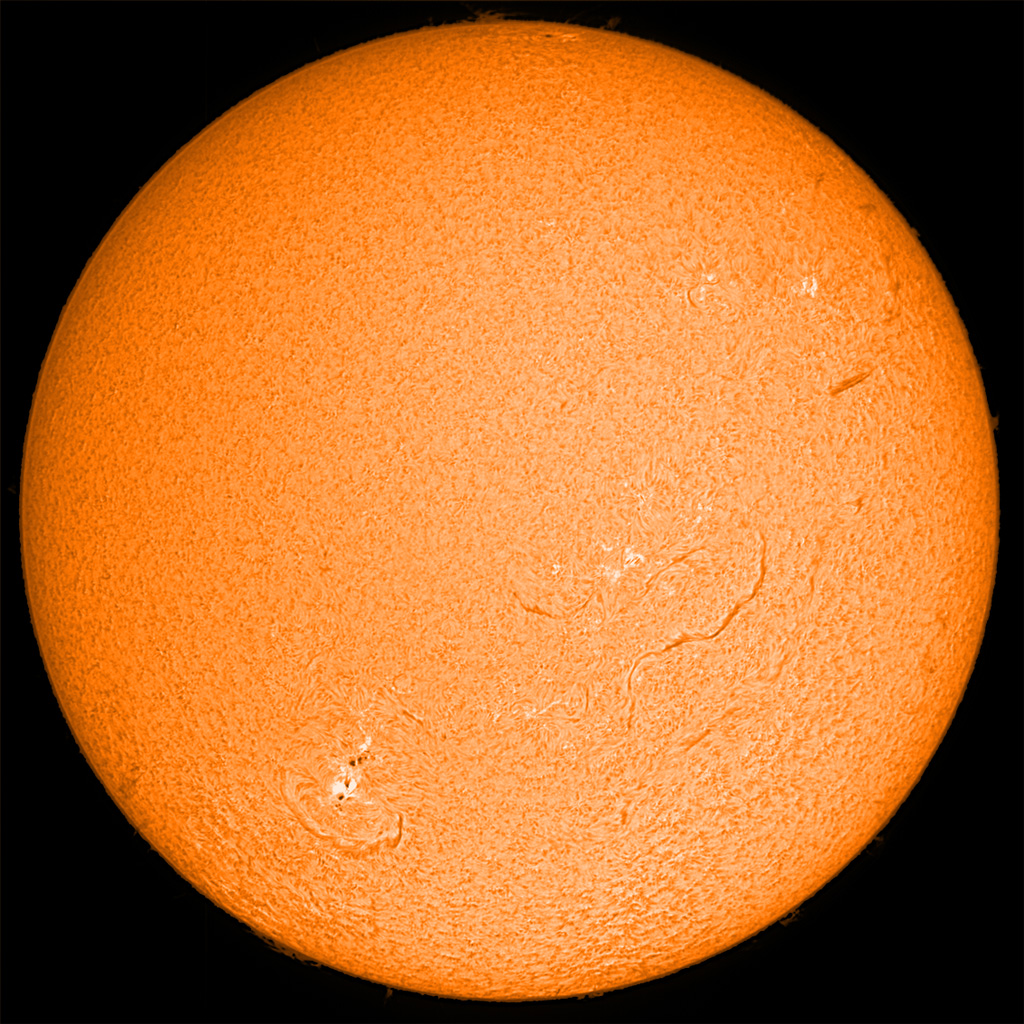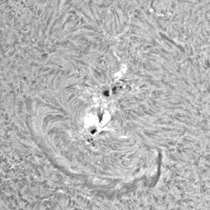why call it a silhouette when i can be trendy?
if you look around while the sun is partially eclipsed, you may notice strange things in the shadows: a blurring of the sharp line between light and dark, strange shapes in light. leaves in the trees may create a pinhole camera effect giving projections of the eclipsed sun on the ground.
i couldn't find an example in the immediate area so i made one myself ;)
I know, you're thinking that's just my first web space casting a shadow. Here's a more dramatic example i encountered indoors created by holes in the blinds:
Try increasing gamma if dark sections aren't distinguished
Sunday, October 26, 2014
Thursday, October 23, 2014
eclipse preview and a monster spot
as usual, the sun has upstaged the moon, producing the largest sunspot folks have seen in years at the same time as the partial solar eclipse. it's so big folks are simply referring to it as the monster. larger than jupiter and easily visible without magnification (eclipse glasses only).
here's a section of it:
and here's the full disk in hydrogen alpha mid way through the partial eclipse:
more to follow...
here's a section of it:
and here's the full disk in hydrogen alpha mid way through the partial eclipse:
more to follow...
Sunday, October 19, 2014
solar surface animation, eclipse alert 10/23/14
OK first up
there will be a solar eclipse visible from the US on thursday 10/23/14.
http://shadowandsubstance.com/#Partial
needless to say, as it's only a partial eclipse, the sun will still be blindingly bright.
protective eye-wear or projection is a must for viewing.
not much happened in my full disk Ha animations.
close-ups of prominences however gave interesting movements.
so here are some close ups of the disk surface.
not quite as dramatic as a prominence lifting off, but still interesting.
first, here's the full field (click on image for full size):
there will be a solar eclipse visible from the US on thursday 10/23/14.
http://shadowandsubstance.com/#Partial
needless to say, as it's only a partial eclipse, the sun will still be blindingly bright.
protective eye-wear or projection is a must for viewing.
not much happened in my full disk Ha animations.
close-ups of prominences however gave interesting movements.
so here are some close ups of the disk surface.
not quite as dramatic as a prominence lifting off, but still interesting.
first, here's the full field (click on image for full size):
high contrast grey-scale
here's a circular filament around an active region:
here are what look like classic magnetic field lines from one sun spot to another:
a filament arching off the surface:
eruptions around a sun spot, which, i guess is why they're called "active regions":
imaging details:
7/5/14 newport beach, ca
DMK 51, 2.5x Powermate, Lunt 60 PT B1200
2 hours of imaging at ~12 fps every other minute
best 300 frames every minute
7.8 ms exposure
the images were spoiled by dust on the sensor
finally salvaged them by creating artificial flats
though you can still see some faint shadows of dust spots in the animations
(right side of last)
Monday, October 6, 2014
Saturn 2014
forgot to send out this year's best shot:
getting some nice color in the bands
a hint of the north polar cloud, but no hexagon
can see Cassini's division and the maybe Encke minimum
the images are taken by using a video camera, stacking thousands of short long exposures
allowing processing software to select the images least distorted by seeing
stacking thousands of images in this way gives a much more sharp image
in theory one can upsample the video by 2x to get better magnification
so i decided to do a test, comparing and upsampled image
with an image using a 2.5x barlow to give more magnification
but requiring longer exposure.
which will be better?
larger magnification with longer exposure
or shorter exposure eliminating seeing effects?
2.5x barlow:
upsampled 2x:
though the seeing wasn't really sufficient for either
getting some nice color in the bands
a hint of the north polar cloud, but no hexagon
can see Cassini's division and the maybe Encke minimum
the images are taken by using a video camera, stacking thousands of short long exposures
allowing processing software to select the images least distorted by seeing
stacking thousands of images in this way gives a much more sharp image
in theory one can upsample the video by 2x to get better magnification
so i decided to do a test, comparing and upsampled image
with an image using a 2.5x barlow to give more magnification
but requiring longer exposure.
which will be better?
larger magnification with longer exposure
or shorter exposure eliminating seeing effects?
2.5x barlow:
compare the Encke minimum and colored bands
close, but i think the barlow winsthough the seeing wasn't really sufficient for either
Sunday, September 21, 2014
saturn overview
Saturn
6th planet from the sun, second largest after jupiter
a gas giant
it has a slight yellowish color due to ammonia in the upper atmosphere
with faint bands (much less dramatic than jupiter's)
and...
first view of saturn through a telescope:
unknowingly, i pointed the scope at a bright "star" rising in the east
and was shocked to see it had rings...
a shudder and a concrete sense that there really is more out there than we know.
there's something about the rings and the shadow they cast over the sphere that makes it appear much more like a perfect 3-dimensional structure than a simple disk.
the gap in the rings is called the Cassini division.
the darker band outside the cassini division is called the Encke minimum.
there's a near mythical gap outside of that called the Encke division.
that is only visible from earth with under excellent seeing conditions with high quality optics.
the angle of the rings varies from year to year as saturn makes its 29.5 year orbit around the sun.
in 2002 they were maximally tilted with the south pole facing us
(about the time i bought my largest scope)
here's one of my earliest shots from 2004:
i found the iconic line made an interesting image:
there's something special about the north pole:
santa's helpers must be more mischievous on saturn
i've yet to see or image it, but as the north pole continues to tilt
towards us i'm hoping to catch it
saturn has 150 moons and counting
the largest, titan, is larger than mercury and contains it's own atmosphere as well as hydrocarbon lakes.
titan casting shadow on saturn's surface:
enceladus is notable for salt water geysers which contribute to saturn's rings
more on saturn:
http://solarsystem.nasa.gov/planets/profile.cfm?Object=Saturn
http://www.nakedeyeplanets.com/saturn-orbit.htm
http://www.astronomycast.com/2007/10/episode-59-saturn/
http://www.astronomycast.com/2014/05/ep-344-the-rings-of-saturn/
http://www.astronomycast.com/2007/11/episode-61-saturns-moons/
http://en.wikipedia.org/wiki/Saturn%27s_hexagon
6th planet from the sun, second largest after jupiter
a gas giant
it has a slight yellowish color due to ammonia in the upper atmosphere
with faint bands (much less dramatic than jupiter's)
and...
IT HAS RINGS!
first view of saturn through a telescope:
unknowingly, i pointed the scope at a bright "star" rising in the east
and was shocked to see it had rings...
a shudder and a concrete sense that there really is more out there than we know.
there's something about the rings and the shadow they cast over the sphere that makes it appear much more like a perfect 3-dimensional structure than a simple disk.
the gap in the rings is called the Cassini division.
the darker band outside the cassini division is called the Encke minimum.
there's a near mythical gap outside of that called the Encke division.
that is only visible from earth with under excellent seeing conditions with high quality optics.
the angle of the rings varies from year to year as saturn makes its 29.5 year orbit around the sun.
in 2002 they were maximally tilted with the south pole facing us
(about the time i bought my largest scope)
here's one of my earliest shots from 2004:
in 2009, they were edge-on
though many find this the worst time to view saturni found the iconic line made an interesting image:
the rings are now opening again
peaking in June 2017 with the best view of the rings and the north pole of the planet (this event will sell lots of telescopes ;)there's something special about the north pole:
the dark patch at the north pole is actually hexagonal!
it is a persistent cloud pattern, similar to jupiter's great red spotsanta's helpers must be more mischievous on saturn
i've yet to see or image it, but as the north pole continues to tilt
towards us i'm hoping to catch it
saturn has 150 moons and counting
the largest, titan, is larger than mercury and contains it's own atmosphere as well as hydrocarbon lakes.
titan casting shadow on saturn's surface:
9 or 10 can be seen thru an amateur telescope
enceladus is notable for salt water geysers which contribute to saturn's rings
more on saturn:
http://solarsystem.nasa.gov/planets/profile.cfm?Object=Saturn
http://www.nakedeyeplanets.com/saturn-orbit.htm
http://www.astronomycast.com/2007/10/episode-59-saturn/
http://www.astronomycast.com/2014/05/ep-344-the-rings-of-saturn/
http://www.astronomycast.com/2007/11/episode-61-saturns-moons/
http://en.wikipedia.org/wiki/Saturn%27s_hexagon
Saturday, September 6, 2014
M 24, it's full of stars
"my God it's full of stars"
the patch of red, suggested there was some glowing hydrogen in the surrounding gas, so i decided to shoot it with an Ha filter:
Here's a combined view:
interestingly i see an Ha wall along the upper right margin of the star cloud
that is more evident in the HaRGB than the Ha itself.
if it weren't full of stars it would look like this:
Lastly here's a close up of the open cluster in the upper left portion of the star cloud i shot a few years ago:
-bill w
image details:
FS 60c @ 254 mm 5.23"/px full size
field approximately 2.5x3.5 degrees
Hutech IDAS, Chroma Loglow, Astrodon 5nm Ha filters
SX H9C, ASA DDM 60 unguided
4 panel mosiac composed of approximately 17 5 minute subs RGB
15 5 minutes subs Ha
7/21-8/17/2014
newport beach, ca
more than you wanted to know about 2001:
http://www.filmsite.org/twot.html
http://c2.com/cgi/wiki?MyGodItsFullOfStars
-Dave Bowman's final words prior to entering the monolith in 2001: a space odyssey. contrary to my recollection, the line occurred only in the book version, not the movie, but was grafted into the movie as a flashback in the opening of 2010.
Messier object 24, a/k/a the sagittarius star cloud, isn't really a star cluster, it's just a bright patch of stars in the milky way surrounded by dust. it can be thought of as a hole in the dust, allowing us to see much deeper towards the center of our galaxy. (no frank, you can't see the black hole). The bright patch can be seen with the naked eye in skies dark enough to see the milky way as a bright patch above sagittarius
Here's a combined view:
interestingly i see an Ha wall along the upper right margin of the star cloud
that is more evident in the HaRGB than the Ha itself.
if it weren't full of stars it would look like this:
Lastly here's a close up of the open cluster in the upper left portion of the star cloud i shot a few years ago:
-bill w
image details:
FS 60c @ 254 mm 5.23"/px full size
field approximately 2.5x3.5 degrees
Hutech IDAS, Chroma Loglow, Astrodon 5nm Ha filters
SX H9C, ASA DDM 60 unguided
4 panel mosiac composed of approximately 17 5 minute subs RGB
15 5 minutes subs Ha
7/21-8/17/2014
newport beach, ca
more than you wanted to know about 2001:
http://www.filmsite.org/twot.html
http://c2.com/cgi/wiki?MyGodItsFullOfStars
Thursday, September 4, 2014
Delta Aquilae is 50 light years away
Aquila, the eagle, is a summer constellation.
It can be found here in the summer evenings section:
It’s brightest star, alpha aquilae, a/k/a altair, forms one of
the corners of the summer triangle. A
huge right triangle seen overhead during summer nights.
Delta aquilae is at the center of the eagle. At visual magnitude 3.36 it can be seen with
the naked eye in good viewing conditions.
It is 50 light years away.
Einstein’s theory of special relativity. Basically states that the speed of light is
the same for all observers. Consider a
space ship moving away from us at half the speed of light. We shine a bright pulse of light into
space. After a year the light has
traveled one light year away from us, while the space ship has traveled half a
light year. The pulse of light is half a
light year from the ship. So if the
light has only traveled half a light year from the ship, how can its speed relative
to the ship be the same? Speed=distance/time. So the solution is that the ship has only
experienced half the time we have on earth—time has slowed down.
Consider a photon leaving delta aquilae 50 years ago. Some of us have experienced 50 years waiting
for its arrival today. But the photon,
traveling AT the speed of light experienced no time at all.
Something to think about for this day.
Imaging details.
FS 60c @ 254 mm 5.23"/px full size
Chroma Loglow filter
SX H9C, ASA DDM 60 unguided
13 5 minutes, 24x30s, 24x3s
Chroma Loglow filter
SX H9C, ASA DDM 60 unguided
13 5 minutes, 24x30s, 24x3s
"diffraction spikes" added in processing for emphasis
newport beach, ca
newport beach, ca
Wednesday, August 20, 2014
Leo Galaxy Cluster aka Abell 1367: Part 3 quasars and cosomology
Caught a number of background quasars in the field of Abell 1367.
quasars (quasi-stellar radio sources)
look like faint blue stars
but they have *very* high red-shifts
which made them somewhat of a mystery
turns out they are actually extremely distant galaxies
with black holes that are actively feeding on matter
generating massive amounts of light.
though light cannot escape the black holes,
energy is generated just outside the event horizon
by massive gravitational stresses and friction acting on the incoming material.
the most distant quasar in the image
(blue dot just below the S in QSO lower left)
quasars (quasi-stellar radio sources)
look like faint blue stars
but they have *very* high red-shifts
which made them somewhat of a mystery
turns out they are actually extremely distant galaxies
with black holes that are actively feeding on matter
generating massive amounts of light.
though light cannot escape the black holes,
energy is generated just outside the event horizon
by massive gravitational stresses and friction acting on the incoming material.
the most distant quasar in the image
(blue dot just below the S in QSO lower left)
has a red shift (Z) of 3.36:
recall that the redshift of the galaxy cluster 330 million light years distant was 2.3% or .023
the QSO's red shift is 3.36 or 336%!
so how far away is it?
well here's where things get *relatively* slippery
the universe is expanding
it's taken light a really long time to reach us from this object
do we want to know how far away it is now or how far away it was when the light left the galaxy?
when it left the galaxy, our planet, solar system and sun didn't exist.
now, due to the expansion of the universe, the galaxy is moving away from us faster than the speed of light
it's current distance can never be observed
dirty cosmology trick:
nothing can move through space faster than the speed of light
but the universe itself can expand faster than the speed of light
(my head hurts)
the commonly used figure is
light travel time
which is neither where it is now, nor where it was when it emitted the light
but a measure of how long it took the photons to reach us
it gets even worse:
redshift versus distance is not linear for large distances
so in order to calculate the distance
theoretical models with various parameters including the shape of the universe!
have to be used
best estimates for the parameters change over time
...so by one of the more commonly used estimates*, this one is
11.8 billion light years away
the big bang happened 13.7 billion years ago
the universe was a lot smaller place when light left this object
here's another small crop from the center of the image
including the Ha emitting galaxy from last time
with 3 quasars (distance in billions of light years):
interesting cosmological explanations (laymen's terms):
life the universe and everything
(be sure to mouse over the answer)
Ned Wright's FAQ on cosmology and the big bang
*Ned Wright's Cosmology Calculator
recall that the redshift of the galaxy cluster 330 million light years distant was 2.3% or .023
the QSO's red shift is 3.36 or 336%!
so how far away is it?
well here's where things get *relatively* slippery
the universe is expanding
it's taken light a really long time to reach us from this object
do we want to know how far away it is now or how far away it was when the light left the galaxy?
when it left the galaxy, our planet, solar system and sun didn't exist.
now, due to the expansion of the universe, the galaxy is moving away from us faster than the speed of light
it's current distance can never be observed
dirty cosmology trick:
nothing can move through space faster than the speed of light
but the universe itself can expand faster than the speed of light
(my head hurts)
the commonly used figure is
light travel time
which is neither where it is now, nor where it was when it emitted the light
but a measure of how long it took the photons to reach us
it gets even worse:
redshift versus distance is not linear for large distances
so in order to calculate the distance
theoretical models with various parameters including the shape of the universe!
have to be used
best estimates for the parameters change over time
...so by one of the more commonly used estimates*, this one is
11.8 billion light years away
the big bang happened 13.7 billion years ago
the universe was a lot smaller place when light left this object
here's another small crop from the center of the image
including the Ha emitting galaxy from last time
with 3 quasars (distance in billions of light years):
interesting cosmological explanations (laymen's terms):
life the universe and everything
(be sure to mouse over the answer)
Ned Wright's FAQ on cosmology and the big bang
*Ned Wright's Cosmology Calculator
Saturday, August 16, 2014
Leo Galaxy Cluster aka Abell 1367: Part 2 Red Shift
when distances get very large, astronomers measure the "red shift"
of light to determine distances:
more distant objects are moving away more rapidly due to the expansion of the universe
and therefore the light from these objects is shifted further to longer wavelengths (more red) by the Doppler effect*
this was part of Hubble's big thing,
took two very cool discoveries:
1 certain fuzzy patches had shockingly large redshifts suggesting they are "island universes" (galaxies) much further away than we had imagined.
2 a special type of variable star has a period proportional to it's absolute brightness, which means they can be used to measure distances with reasonable accuracy by comparing the measured brightness to the absolute brightness.
Hubble combined these discoveries, plotting distance to galaxies versus red shift
and found more distant galaxies were moving away more rapidly
proving the expansion of the universe
Abell 1367 has a redshift of 2.2%
this means that hydrogen alpha emissions at 656 nm will be shifted to 700 nm
completely out of the range of my narrow band Ha filter (5 nm centered at 656)
fortunately, i have an SII filter centered at 672 nm with a 12nm band width
allowing me to catch redshifted hydrogen emissions with a filter designed for sulfur
which is a cool trick, part of why i picked the cluster
though subtle, i caught one galaxy that definitely shows enhanced Ha emissions:
The upper right tail of this edge-on spiral galaxy (UGC 6697) is clearly blue (due to active young star formation) in standard images
but has a red patch in the middle of the blue with the SII (Ha) enhanced images
and possibly a more subtle red area around the bright core
due to hydrogen emissions in a large nebula (often found in star forming regions)
or active galactic nucleus = black hole feasting on stars emitting high energy photons as it rips apart matter
there were two much more subtle regions
the upper arm of the small spiral galaxy NGC 3861b:
and the red smile in this faint irregular galaxy KUG 1140+202A:
:-)
*technically not the Doppler effect in this context
more distant objects are moving away more rapidly due to the expansion of the universe
and therefore the light from these objects is shifted further to longer wavelengths (more red) by the Doppler effect*
this was part of Hubble's big thing,
took two very cool discoveries:
1 certain fuzzy patches had shockingly large redshifts suggesting they are "island universes" (galaxies) much further away than we had imagined.
2 a special type of variable star has a period proportional to it's absolute brightness, which means they can be used to measure distances with reasonable accuracy by comparing the measured brightness to the absolute brightness.
Hubble combined these discoveries, plotting distance to galaxies versus red shift
and found more distant galaxies were moving away more rapidly
proving the expansion of the universe
Abell 1367 has a redshift of 2.2%
this means that hydrogen alpha emissions at 656 nm will be shifted to 700 nm
completely out of the range of my narrow band Ha filter (5 nm centered at 656)
fortunately, i have an SII filter centered at 672 nm with a 12nm band width
allowing me to catch redshifted hydrogen emissions with a filter designed for sulfur
which is a cool trick, part of why i picked the cluster
though subtle, i caught one galaxy that definitely shows enhanced Ha emissions:
The upper right tail of this edge-on spiral galaxy (UGC 6697) is clearly blue (due to active young star formation) in standard images
but has a red patch in the middle of the blue with the SII (Ha) enhanced images
and possibly a more subtle red area around the bright core
due to hydrogen emissions in a large nebula (often found in star forming regions)
or active galactic nucleus = black hole feasting on stars emitting high energy photons as it rips apart matter
there were two much more subtle regions
the upper arm of the small spiral galaxy NGC 3861b:
and the red smile in this faint irregular galaxy KUG 1140+202A:
:-)
*technically not the Doppler effect in this context
Wednesday, August 13, 2014
Leo Galaxy Cluster aka Abell 1367: Part 1 Deep Sky
factoid: Abell 1367 has more galaxies brighter than mag 14 than any other galaxy cluster
the term "deep sky objects" is used by amateur astronomers to denote
objects other than solar system objects and individual stars.
as some may have notice, all of my images since moving have involved objects in our solar system,
most sol itself. the most distant object being saturn at approximately 8 million miles or 11 a.u. or 1 light hour
at 330 million light years, Abell 1367 goes to the other extreme.
to put things in perspective, the closest star is 4 light years away
the pleiades are 375 light years (ly) away
orion nebula 1500 ly
crab nebula 6000 ly
the black hole at the center of the milky way 27,000 ly
the andromeda galaxy 2 million ly
M51, the whirl pool galaxy 15 million ly
the virgo galaxy cluster 50 million ly
most of the dots in this field are not stars, but galaxies each containing billions of stars.
here's an annotated version with galaxies circled
the large circle outlines the galaxy cluster itself which is a bit bigger than my field of view
objects circled with an arrow pointing away are high proper motion stars
more about QSO's later
the term "deep sky objects" is used by amateur astronomers to denote
objects other than solar system objects and individual stars.
as some may have notice, all of my images since moving have involved objects in our solar system,
most sol itself. the most distant object being saturn at approximately 8 million miles or 11 a.u. or 1 light hour
at 330 million light years, Abell 1367 goes to the other extreme.
to put things in perspective, the closest star is 4 light years away
the pleiades are 375 light years (ly) away
orion nebula 1500 ly
crab nebula 6000 ly
the black hole at the center of the milky way 27,000 ly
the andromeda galaxy 2 million ly
M51, the whirl pool galaxy 15 million ly
the virgo galaxy cluster 50 million ly
link to full size
most of the dots in this field are not stars, but galaxies each containing billions of stars.
here's an annotated version with galaxies circled
the large circle outlines the galaxy cluster itself which is a bit bigger than my field of view
objects circled with an arrow pointing away are high proper motion stars
more about QSO's later
link to full size annotated
details:
FS102 OLV @ 618.8 mm, 2.15”/px, IDAS LPR filter/astronomiks 12nm SII filter, SX H9/H9C camera
Luminance 120x5 min, RGB 25x20 min, SII 24x20 min
4/24-5/5/2014 Newport Beach, CA
needless to say it took a lot of work to pull the galaxies out of the light pollution in the image
Luminance 120x5 min, RGB 25x20 min, SII 24x20 min
4/24-5/5/2014 Newport Beach, CA
needless to say it took a lot of work to pull the galaxies out of the light pollution in the image
Saturday, July 26, 2014
filaprom
a solar prominence is typically a structure seen on the edge of the sun against the black background of space. it often looks like an arch. it consists of hydrogen plasma held off of the surface by magnetic fields.
a solar filament is a large dark line seen across the face of the sun. again hydrogen plasma held off the surface, but over the surface facing the observer, rather than on edge.
in a sense, they are two sides of the same coin:
the filament absorbs the intense light from directly beneath then re-radiates it in all directions, with only a small amount heading directly on a line to the observer. This is why filaments appear dark on the solar disk. On the edge, we see the weaker emission component of the filament against a dark background.
that being said, i had difficulty visualizing filaments as the same structure.
this is in part due to the fact that most images which show prominences are processed in order to lighten them compared to the surface to show more detail, so prominences always seem lighter.
...until i caught a filaprom. a filament that continues off the edge of the solar disk, clearly showing a dark line arching up over the surface:
2/16/14 newport beach, ca
DMK 51, 2.5x Powermate, Lunt 60 PT B1200
*manually guided on an altazmuth takahashi teegul mount.
took quite some time to process as software would not track well on solar image moving all over the field
a solar filament is a large dark line seen across the face of the sun. again hydrogen plasma held off the surface, but over the surface facing the observer, rather than on edge.
in a sense, they are two sides of the same coin:
the filament absorbs the intense light from directly beneath then re-radiates it in all directions, with only a small amount heading directly on a line to the observer. This is why filaments appear dark on the solar disk. On the edge, we see the weaker emission component of the filament against a dark background.
that being said, i had difficulty visualizing filaments as the same structure.
this is in part due to the fact that most images which show prominences are processed in order to lighten them compared to the surface to show more detail, so prominences always seem lighter.
...until i caught a filaprom. a filament that continues off the edge of the solar disk, clearly showing a dark line arching up over the surface:
2/16/14 newport beach, ca
DMK 51, 2.5x Powermate, Lunt 60 PT B1200
*manually guided on an altazmuth takahashi teegul mount.
took quite some time to process as software would not track well on solar image moving all over the field
Sunday, July 13, 2014
lost disk in color
what color are the Ha (hydrogen alpha) images of the sun?
hydrogen alpha is red, but viewing thru my solar scope, it looks reddish orange to me
no idea why, the filter is clearly red.
the images below are composites, combining a short exposure which picks up the bright surface detail
with a longer exposure burning out the center in order to pick up the faint prominences projecting off the edge of the disk.
when combining these the prominences typically appear brighter than the disk, an artifact of processing in an attempt to bring out the faint detail in the prominence
in the first colorized version below, i used orange for the central structure and pure red for the prominences
in an attempt to correct for this brightening:
seemed like a good idea, but a bit of the detail in the prominences is lost
here's a more aesthetically pleasing version with yellow flames shooting off the surface:
Friday, July 4, 2014
4th of july fireworks from the lost disk
back in may i took a quick look at the sun and saw multiple prominences erupting around the disk. one of which looked like it was lifting off, so i zoomed in on it and was lucky enough to catch a lift off (prior entry).
after processing the lift off images,
i looked at all the full disk images
and discovered all the images occurred after the lift off was complete, missing multiple prominences
found the original full disk image from the start of lift off
misfiled on my hard drive so here it is:
i also found one more frame for the start of the close up animation
here's a small version:color versions later
happy 4th
5/4/14 newport beach, ca
DMK 51, Lunt 60 PT B1200, ASA DDM60
images captured ~ every 5 mintues
images captured ~ every 5 mintues
Sunday, June 22, 2014
happy solstice
more solar work
first a prominence animation.
I've increased the imaging frequency and animation speed to give more fluid motion in this one.
here's the prominence image now that i've typed enough to avoid the annoying navigation bar to the upper right (animation link below)
Here's the animation (large file)
the animation is a total of 76 images taken every 2 minutes
starting 3:30 pm on 5/31/14
each image was constructed by stacking 300 frames
captured at 11 frames per second
here's a crop off the lower left side edge with rapid, small scale eruptions:
this is full scale with a rate 5 fps (half the prior image)
(top is 75%)
Here's a full disk animation which is...less dramatic
the interesting part is that you can see the sun's slow rotation
as the animation snaps back to the beginning:
full disk animation (large file)
here's a bit of activity upper left at full scale:
first a prominence animation.
I've increased the imaging frequency and animation speed to give more fluid motion in this one.
here's the prominence image now that i've typed enough to avoid the annoying navigation bar to the upper right (animation link below)
Here's the animation (large file)
the animation is a total of 76 images taken every 2 minutes
starting 3:30 pm on 5/31/14
each image was constructed by stacking 300 frames
captured at 11 frames per second
here's a crop off the lower left side edge with rapid, small scale eruptions:
this is full scale with a rate 5 fps (half the prior image)
(top is 75%)
Here's a full disk animation which is...less dramatic
the interesting part is that you can see the sun's slow rotation
as the animation snaps back to the beginning:
full disk animation (large file)
here's a bit of activity upper left at full scale:
boring details:
prominence:
5/31/14 newport beach, ca
prominence:
5/31/14 newport beach, ca
DMK 51, 2.5x Powermate, Lunt 60 PT B1200, ASA DDM60
76 images taken every 2 minutes
starting 3:30 pm on 5/31/14
each image was constructed by stacking 300 frames
captured at 11 frames per second
full disk:
76 images taken every 2 minutes
starting 3:30 pm on 5/31/14
each image was constructed by stacking 300 frames
captured at 11 frames per second
full disk:
5/4/14 newport beach, ca
DMK 51, Lunt 60 PT B1200, ASA DDM60
images captured ~ every 5 mintues
images captured ~ every 5 mintues
Thursday, June 5, 2014
Saturn and friends
caught saturn the other night with fair seeing
a number of moons were evident visually
visually i was able to see titan, tethys, reha and dione
stretching in photoshop brought out enceladus and surprisingly, faint hyperion up top.
mimas is lost in the glare just below the planet and iapetus is way off the field to the left
Details
6/1/2014 costal peak park, newport beach, ca
Nexstar 8 GPS, ZWO ASI120MC camera
for disc close up
Shutter=9.560ms Gain=97 Gamma=50 104 fps
moons
Shutter=29.53ms Gain=97 Gamma=88
FPS (avg.)=13
Thursday, May 22, 2014
up up and away
saw a promising prominence on 5/4/14 and decided to image it:
here's the animation just over 2 hours imaging once every 5 minutes
a lucky catch as the magnetic field lines holding the hydrogen plasma in place above the sun snapped:
boring details:
5/4/2014, newport beach, ca
DMK 51, 2.5x Powermate, Lunt 60 PT B1200, ASA DDM60
using firecapture now which allowed a sequence
imaging one minute out of every 5 @ 12fps
and mostly automated processing with registax
still had to do final alignment by hand
DMK 51, 2.5x Powermate, Lunt 60 PT B1200, ASA DDM60
using firecapture now which allowed a sequence
imaging one minute out of every 5 @ 12fps
and mostly automated processing with registax
still had to do final alignment by hand

Thursday, May 15, 2014
solar prominence, the movie: mother of a prom revisited
sent out an image last year of a solar prominence i'd captured :
mother of a prom
mother of a prom
here's an animation from the same day:
Long winded processing notes:
i continued to capture video of the prominence for 160 minutes at 2 frames per second
unfortunately, the resulting avi file was so big, my processing software crashed on it repeatedly
(virtual dub and registax) so i abandoned the project
improvements in the processing software (and actually reading the manual) as well as newer editing software (pipp) allowed me to chop it up into more managable bits and process them as a batch
wound up with 25x400 second videos
edited with pipp and registax
then taken to photoshop for curves to smooth the background, spot healing to stomp out a spot left by a dust mote (sharp eyed viewer might catch artifact at the left edge towards the end) and final animation.
5/12/13, los alamitos, CA
DMK 51, 2.5x Powermate, Lunt 60 PT B1200, ASA DDM60
Saturday, May 10, 2014
solar animation teaser
A while ago, captured over 2 hours of video of the sun, full disk in hydrogen alpha
hoping to animate some of the motion occurring in the hydrogen plasma.
here's the full disk image (click on image for full size):
after hours of processing, it was mostly a bust
learned i needed either much higher magnification or longer time course or luck
to get something interesting.
here are a few areas where there was a bit of motion:
lower left plage (bright spot)
upper left there was a small area with a mini filament bursting apart in a tiny eruption (scale still larger than planet earth of course). had to up-sample it x2 to see it:
hoping to animate some of the motion occurring in the hydrogen plasma.
here's the full disk image (click on image for full size):
after hours of processing, it was mostly a bust
learned i needed either much higher magnification or longer time course or luck
to get something interesting.
here are a few areas where there was a bit of motion:
lower left plage (bright spot)
Subscribe to:
Posts (Atom)



















